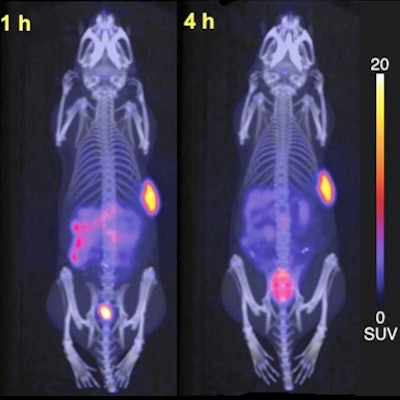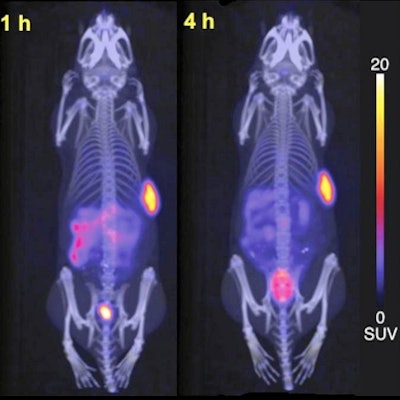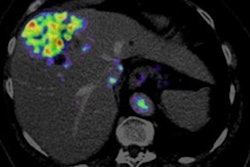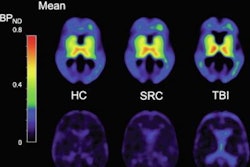
Two copper radionuclides that target the somatostatin receptor overexpressed in neuroendocrine tumors can not only identify tumors but also improve survival, according to new research published in the December issue of the Journal of Nuclear Medicine.
The radiopharmaceutical copper-64 (Cu-64) CuSarTate produced high-quality PET images in a mouse model of neuroendocrine tumors, while its therapeutic counterpart, copper-76 (Cu-67) CuSarTate, reduced tumor volume and extended lifespan.
Neuroendocrine tumors are usually diagnosed with gallium-68 (Ga-68) DOTA-octreotate and treated with lutetium-177 (Lu-177) LuTATE peptide receptor radionuclide therapy, but this can lead to inconsistent tissue biodistribution. A research team led by Carleen Cullinane from the oncology department at the University of Melbourne in Australia used a preclinical mouse model to explore the chemically identical radionuclide pair Cu-64 CuSarTate and Cu-67 CuSarTate.
Mice underwent PET imaging one hour and four hours after injection of the radiotracer. After four hours, the mice were euthanized and the researchers performed biodistribution studies.
 Representative maximum-intensity projection PET/CT images of AR42J tumor-bearing female Balb/c nude mice following injection of Cu-64 CuSarTATE (3 MBq, 0.24 nmol of peptide) at one and four hours after injection. Images created by associate professor Carleen Cullinane of Peter MacCallum Cancer Centre.
Representative maximum-intensity projection PET/CT images of AR42J tumor-bearing female Balb/c nude mice following injection of Cu-64 CuSarTATE (3 MBq, 0.24 nmol of peptide) at one and four hours after injection. Images created by associate professor Carleen Cullinane of Peter MacCallum Cancer Centre.The mice were also injected with five MBq of Lu-177-LuTATE, five MBq of Cu-67 CuSarTate, or saline to determine the copper imaging agent's therapeutic efficacy. Similarly, the mice were injected with a total of 30 MBq of Lu-177 LuTATE, Cu-67 CuSarTate, or saline either as a single intravenous injection or as two 15 MBq fractions, two weeks apart and monitored for tumor growth.
The Cu-64 CuSarTate PET images acquired at both one hour and four hours after injection revealed high tumor uptake, confirmed by ex vivo biodistribution analysis. Tumor growth was inhibited by 75% with the copper imaging agent and by 89% with Lu-177 LuTATE. Survival was extended from 12 days in the control group to 21 days following treatment with both therapies.
In addition, treating tumors with two fractions of either Lu-177 LuTATE or Cu-67 CuSarTate significantly improved survival when compared with delivery as a single fraction. The researchers also observed equivalent efficacy between the two therapies following treatment on both the single and fractionated schedules.
Something notable about Cu-64 CuSarTATE is that it's produced in a cyclotron and has a longer half-life compared with Ga-68 DOTA-octreotate, meaning the tracer can be produced under good manufacturing practice conditions and transported regionally. Also, Cu-67 CuSarTATE can be produced with linear-accelerators in high specific activity and radionuclide purity, so it is not reliant on nuclear reactors, according to the researchers.




















